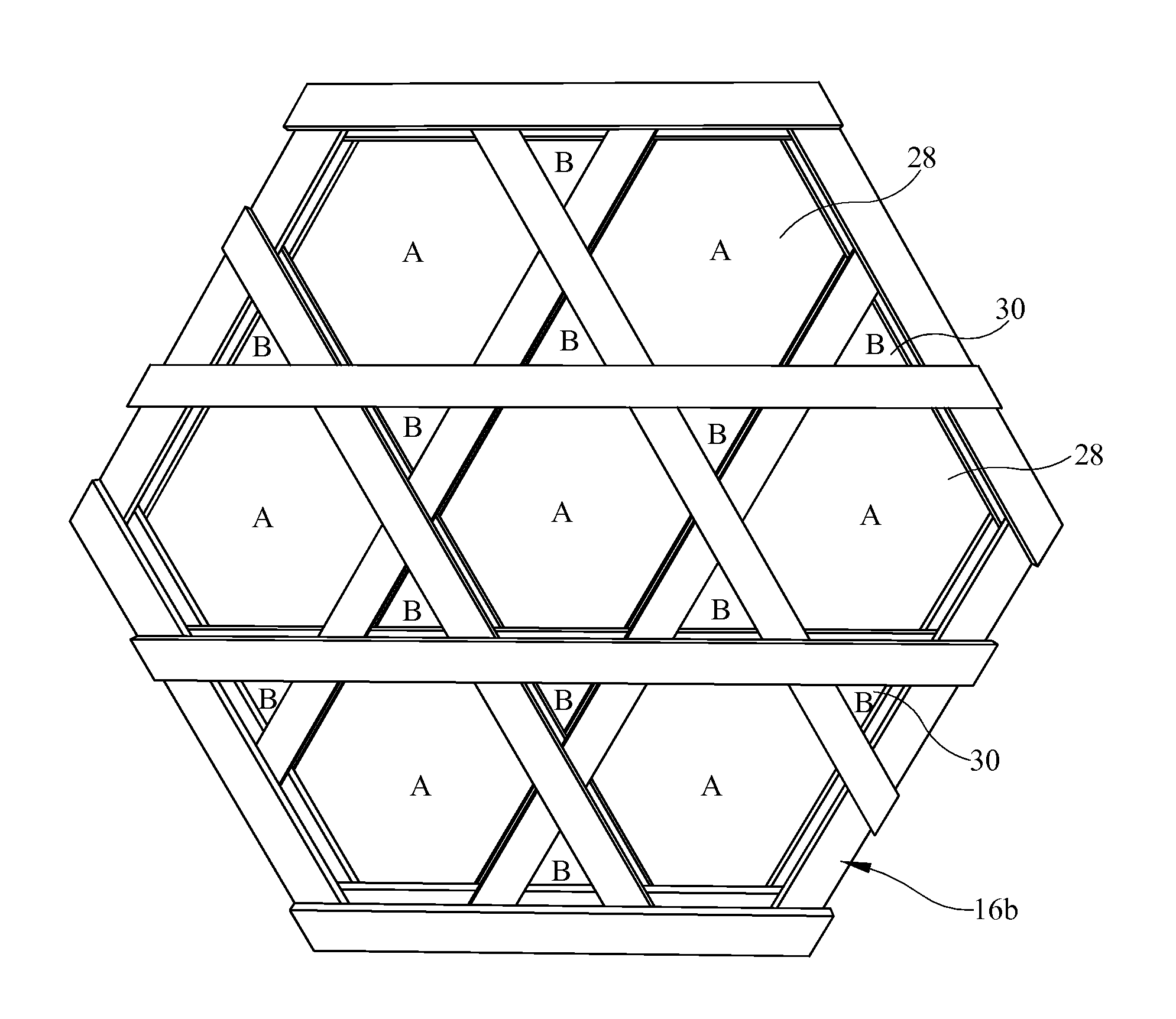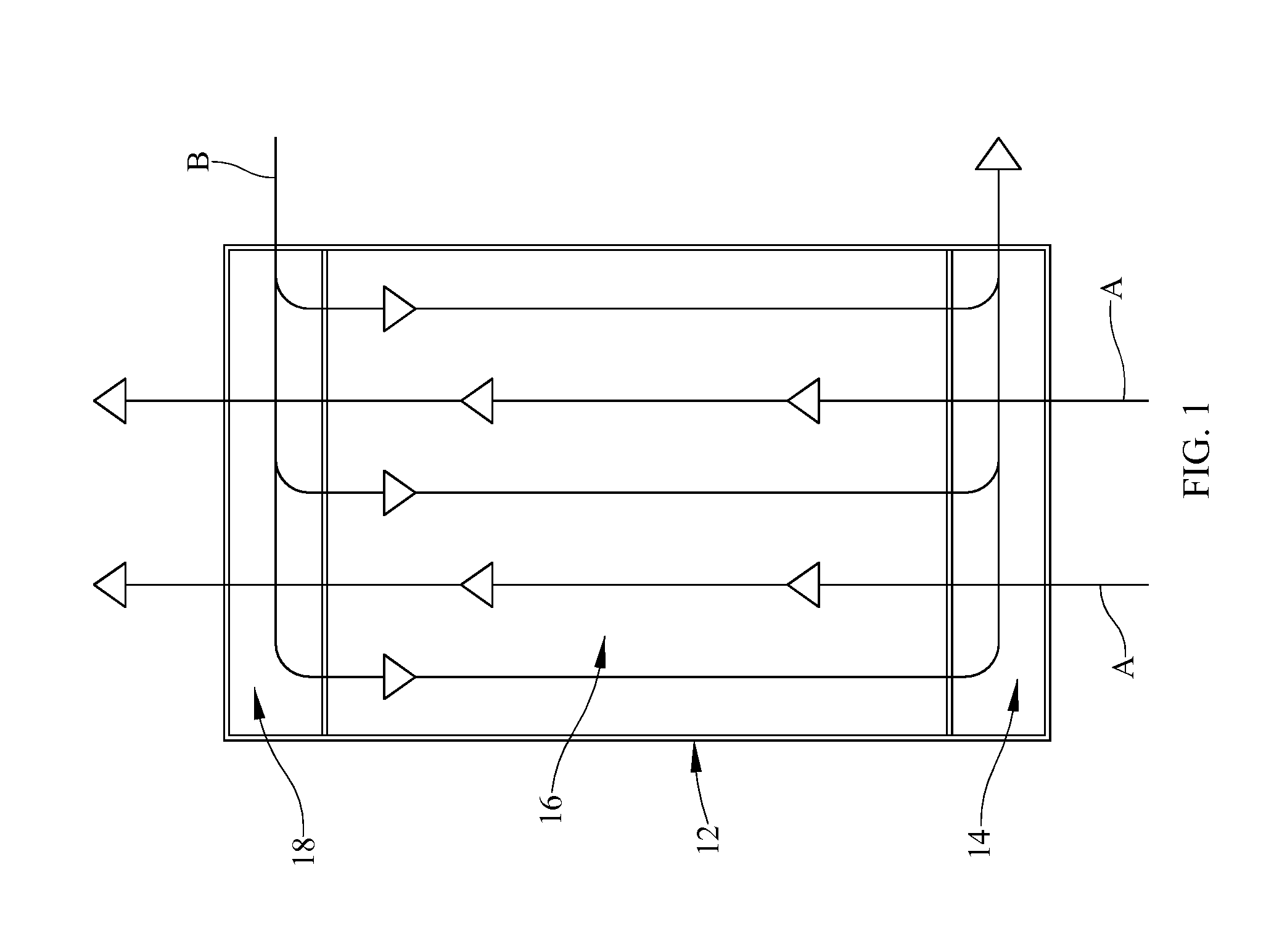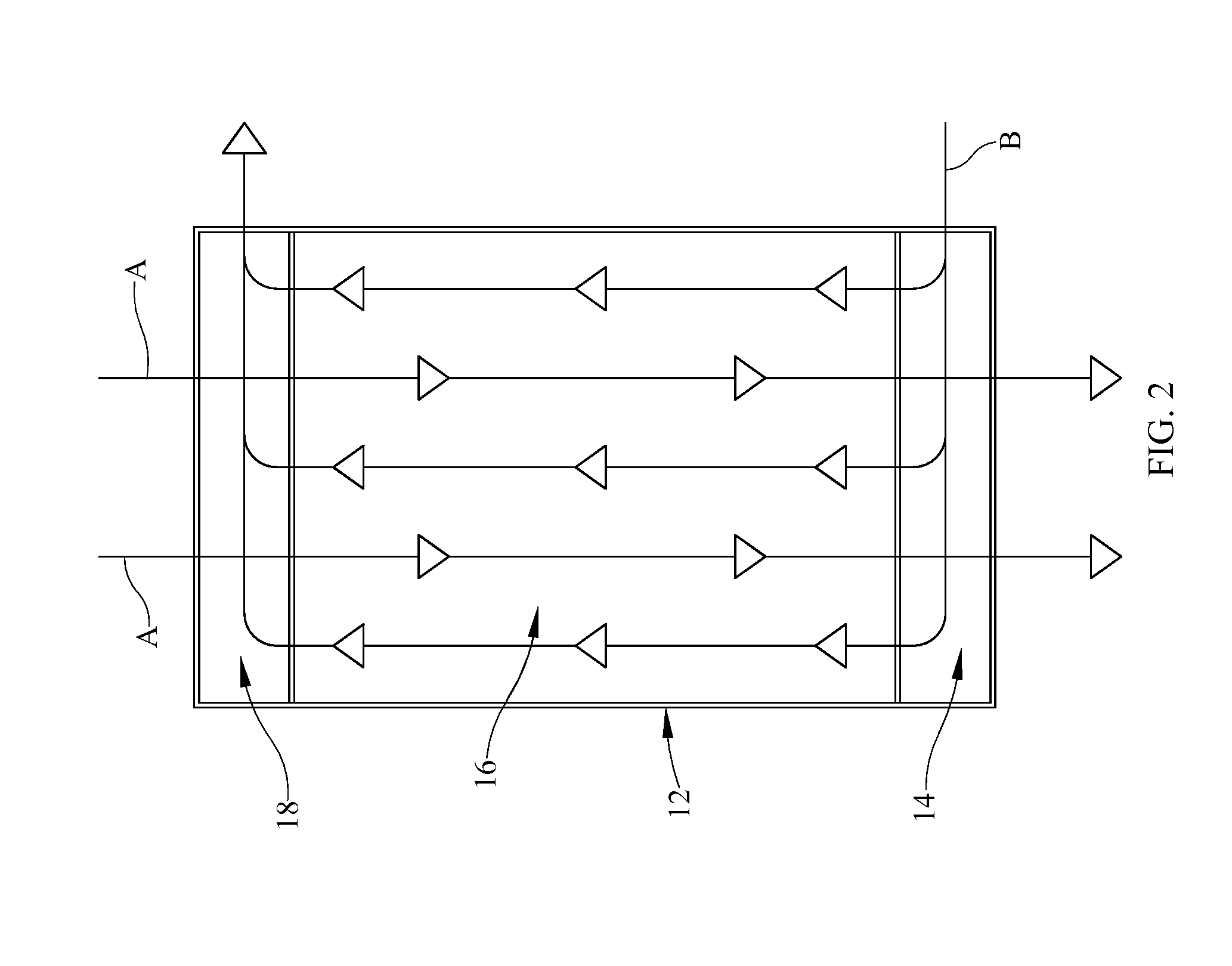Fill material for direct-contact heat/mass exchangers
a technology of filling material and heat/mass exchanger, which is applied in the field of neutral materials to achieve the effect of avoiding the effect of unnecessarily high friction on the movement of the fluid, and reducing the size of the fluid path
- Summary
- Abstract
- Description
- Claims
- Application Information
AI Technical Summary
Benefits of technology
Problems solved by technology
Method used
Image
Examples
Embodiment Construction
[0062]Referring now to the drawings, and specifically to FIGS. 1 and 2, it is seen that the fill material for direct contact heat / mass exchangers of the present invention, is used in a typical direct contact heat exchanger, which may or not be contoured—contoured heat exchangers are disclosed in patent application Ser. No. 14 / 242,635 filed on Apr. 1, 2014, and incorporated herein by reference in its entirety. Such direct contact heat exchangers may have fluid distributors / collectors of various forms depending on how much energy is required to move the fluids and the amount of energy available to perform the task. In a first possibility illustrated in FIG. 1, the heat exchanger 12 has a first fluid A that is a low-density, high-pumping-energy fluid and a second fluid B, which is a high-density low-pumping-energy fluid, with the first fluid
[0063]A entering the heat exchanger 12 at its bottom and flowing upwardly through a lower fluid distributor and collector 14, through the fill mate...
PUM
| Property | Measurement | Unit |
|---|---|---|
| sizes | aaaaa | aaaaa |
| contact angles | aaaaa | aaaaa |
| contact angles | aaaaa | aaaaa |
Abstract
Description
Claims
Application Information
 Login to View More
Login to View More - R&D
- Intellectual Property
- Life Sciences
- Materials
- Tech Scout
- Unparalleled Data Quality
- Higher Quality Content
- 60% Fewer Hallucinations
Browse by: Latest US Patents, China's latest patents, Technical Efficacy Thesaurus, Application Domain, Technology Topic, Popular Technical Reports.
© 2025 PatSnap. All rights reserved.Legal|Privacy policy|Modern Slavery Act Transparency Statement|Sitemap|About US| Contact US: help@patsnap.com



